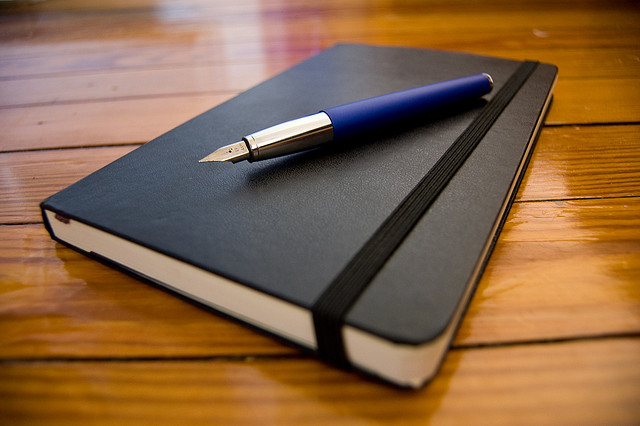When a client is new to the world of blogging, we have found that there are usually a lot of questions (understandably) and some fear. There is something about blogging that bares the writer’s soul to the world. Some clients are uncertain about expressing their thoughts and opinions so publicly. And some clients are okay with that.

I find that blogging is much like writing in a journal, and I will often share this with clients as they begin their blog writing journey. It alleviates the concern that a blog post needs to be written like a research paper, a magazine article or thesis.
Blogging is a much less formal style of writing (like a journal). And like journaling, blogging is a way to reflect on recent events, mull over ideas, offer opinions and consider the future. But here is where the two diverge: When journaling you are writing for yourself, for your own therapy and growth. When blogging you are writing for your readers. Remember, the digital world is reading your posts.
Begin with the end in mind when blogging
In one of his posts on ProBlogger, Darren Rowse suggests 13 questions to ask before publishing a blog post. I find the list quite useful. While you must always be careful with grammar, punctuation and spelling, I think his first two questions are among the most important ones to keep in mind when you are blogging:
1. What is the main point of your post? What’s that one thing you want your readers to know? Don’t try to do too much in your blog post. Have a clear sense of your theme (your story) before you start and stick to it. It goes back to the essence of storytelling. The storyteller who crams way more detail than necessary into their story loses the listener. And in the case of your blog post, you can lose your reader. Stay on track! Know where you are going before you get there.
This is similar to the advice we give when preparing clients for an interview or when writing a news release. Don’t try to do too much with one interview or one news release. You will have other opportunities to tell other stories. Develop that message triangle that encapsulates your main message and stick to it.
2. What do you want readers to do as a result of reading your blog post? Every good story has a purpose. Perhaps it’s to entertain or educate. Perhaps it’s to anger or inspire. Perhaps it’s to start a conversation or a movement. Ask yourself what you want your readers to do with the information you’ve shared. Do you want them to do something? Do you want them to know something? Do you want them to change their mind about something?
Many blog posts end with a call to action so it’s very clear to the reader what the writer wants them to do. Others can end with no specific call to action and that’s okay, too. It depends on your goal in writing.
Blogging as reflection with a purpose
To accomplish any of these ends your blog post needs to be useful to your readers. It shouldn’t merely be a dumping ground for your internal thoughts and reflections like a personal journal entry might be. Your post needs to relate to your readers. It needs to have the “what’s-in-it-for-your-reader” message. While it’s fine to start a blog post with a personal experience, the rest of the post needs to bring in your readers—it needs to be pertinent to them. It needs to speak to them whether you’re writing for a business or consumer audience. Need some ideas? Check out a previous post for inspiration.
So the next time you have a blog post to write? Resist the urge to make your blog a journal for self reflection alone. Write for your reader. Give them something they can use, react to, do something with. And make sure you know what that “something” is before you even start writing.
——– photo credit: new pen, insEyedout via flickr



Blogging: Writing for Your Readers | Change Conversations http://ow.ly/6d4dn